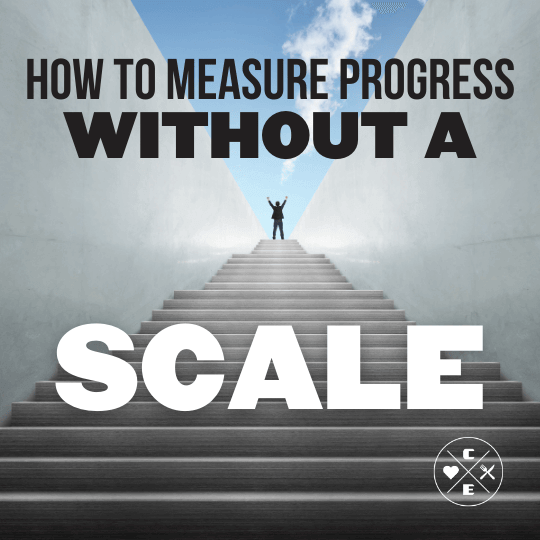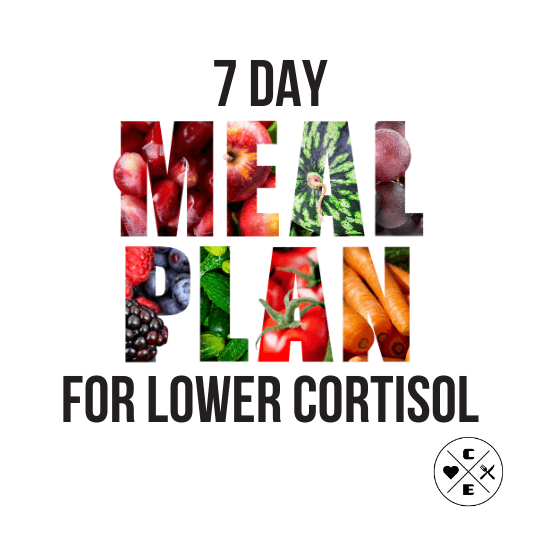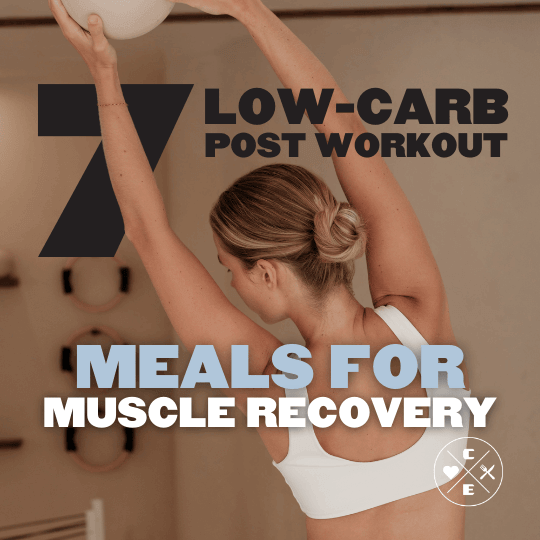
How To Measure Weight Loss Progress Without Using A Scale
Jason Nista
Weight Loss
|
Healthy Lifestyle
6 minute read
Table of Contents
You don’t need a scale to track progress. Here’s how you can measure changes in your body, fitness, and overall health effectively:
- Body Measurements: Track your waist, hips, arms, and thighs every two weeks using a tape measure.
- Progress Photos: Take consistent photos to visually document changes.
- Fitness Tests: Measure strength, endurance, and mobility improvements over time.
- Clothing Fit: Notice how your clothes feel and fit.
- Daily Well-Being: Track energy levels, mood, and sleep quality.
- Health Metrics: Monitor medical numbers like blood pressure and resting heart rate.
These methods give a clearer picture of your progress, especially when the scale doesn’t tell the full story. The article dives into each of these strategies and how to use them effectively.
Related video from YouTube
Physical Changes You Can Measure
Tracking your body's changes is about more than just the number on the scale. Measuring progress in other ways can help you appreciate the shifts that truly matter.
Taking Body Measurements
Use a flexible measuring tape to track your body every two weeks. For accuracy, measure yourself in the morning, before eating, and with minimal clothing or directly on bare skin. Always measure each area twice to ensure consistency.
Focus on key areas such as:
- Waist: Measure at the narrowest point.
- Hips: Measure at the widest point.
- Arms: Measure midway between your shoulder and elbow.
- Thighs: Measure at the widest part.
Make sure the tape stays parallel to the ground and apply consistent tension - snug but not too tight. Record your results in a tracking app or a spreadsheet to monitor changes over time.
How Your Clothes Fit
Your wardrobe can tell you a lot about your progress. Instead of obsessing over size labels, pay attention to how your clothes feel. Are waistbands getting looser? Do sleeves fit more comfortably? Are certain outfits hanging differently?
Pick one snug-fitting outfit and use it as your benchmark every two weeks. This method reflects both fat loss and muscle gain, changes that may not always show up on the scale.
Taking Progress Photos
Photos can offer a visual record of your transformation, often revealing changes that measurements might miss.
- Set Up Consistently: Use the same location, lighting, and fitted clothing for front, side, and back shots.
- Pro Tips: Choose a neutral background, make sure the lighting is even, and take full-body photos from the same distance each time.
While physical changes are important, don't forget to also track improvements in your fitness levels - they can provide even more insight into your journey.
sbb-itb-1989a25
Tracking Fitness Progress
Keeping tabs on your fitness journey reveals more than just numbers on a scale. It showcases your physical abilities and highlights health gains that might not be immediately visible. Often, these changes come before outward signs and can be a great source of motivation.
Strength and Endurance Tests
Tracking your strength and endurance gives you tangible milestones to measure progress. Plan to test yourself every four weeks to see how far you've come.
Strength Goals:
- Record your maximum lifting weight and the number of reps for key exercises.
- Note improvements in bodyweight exercises like push-ups or pull-ups.
For instance, moving from a 50-pound deadlift to 70 pounds is a 40% strength boost - proof of progress, even if the scale doesn’t budge.
Endurance Metrics:
- Track how long you can sustain high-intensity workouts.
- Measure distances covered during runs or cycles.
- Monitor how quickly you recover between sets.
Apps like Strava or Fitbit Coach can help you log and review these stats effortlessly.
Movement and Balance Tests
Functional fitness often paints a clearer picture of overall health than weight alone. Here’s what to focus on:
Key Functional Fitness Indicators:
- Time how long you can balance on one leg.
- Assess core stability and control.
- Track improvements in your range of motion.
- Measure progress in performing more complex movements.
For example, increasing your plank hold from 30 to 60 seconds reflects a stronger, more stable core.
To ensure your results are accurate, keep testing conditions consistent. Pay attention to:
- Time of day.
- Your warm-up routine.
- Energy levels.
- The environment where you test.
Beyond physical improvements, the positive changes you notice in everyday tasks can provide even more insight into your overall health and well-being.
Daily Life Improvements
Keeping track of daily well-being changes can reveal a lot about your health journey - far beyond what a scale can tell you. These small shifts often reflect progress in your fitness and overall health goals.
Energy and Mood Changes
Your energy levels and emotional state are key indicators of how you're doing. Tools like Moodfit can help you spot trends and patterns in these areas.
"Regular physical activity can have a profound impact on both physical and mental health" - Cody Braun, Beachbody Fitness Expert [3]
Try rating your energy and mood each day on a 1-10 scale or using an app. Pay attention to:
- Morning energy levels
- Afternoon productivity highs
- Evening fatigue
- General mood stability
Tracking these patterns over time can help you understand how your habits and routines affect your well-being.
Sleep Improvements
Good sleep is essential for both health and weight management. Research shows that adults who get 7-9 hours of sleep are less likely to face obesity compared to those getting fewer than 7 hours [1]. To improve your sleep, track:
- How long you sleep
- Sleep quality (like disruptions)
- Consistency in bedtime and wake-up times
- How rested you feel in the morning
You can use a sleep tracker or a simple diary to monitor these factors regularly.
Medical Numbers
Monitoring health metrics gives you concrete evidence of progress. Partner with your healthcare provider to keep an eye on:
- Blood pressure
- Resting heart rate
- Cholesterol levels
These numbers often improve before you notice physical changes, making them a great way to measure success. Keep a journal - digital or physical - to log these metrics and spot positive trends over time.
Conclusion: Measuring Success
Tools for Success
Tracking your progress effectively means using a mix of methods. For example, portion-controlled meals can help you stay consistent with nutrition while focusing on achievements that aren't tied to the scale.
Here’s a handy breakdown of useful tracking methods and what they offer:
| Tracking Method | What It Tracks |
|---|---|
| Body Measurements | Changes in specific areas |
| Progress Photos | Visual evidence of transformation |
| Fitness Tests | Strength and endurance progress |
| Daily Energy Logs | Improvements in overall well-being |
When you use these tools together, you get a clearer and more complete picture of your progress.
Key Points
Looking beyond the number on the scale can help you stay motivated and better understand your health journey. Studies show that tracking a variety of indicators increases the chances of reaching and maintaining health goals compared to focusing only on weight [2].
True health success is about more than just numbers - it’s about feeling energized, sleeping better, and improving your overall quality of life.
Related Articles
7-Day Meal Plan for Lower Cortisol
7 minute read
7 Low-Carb Post-Workout Meals for Muscle Recovery
9 minute read
Low-Carb Meal Delivery: Budget vs. Premium Options
7 minute read



